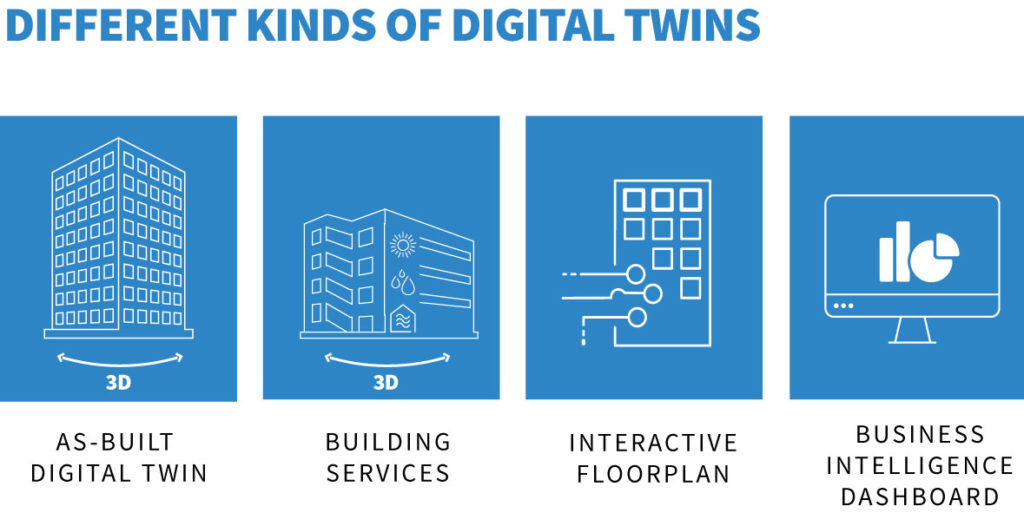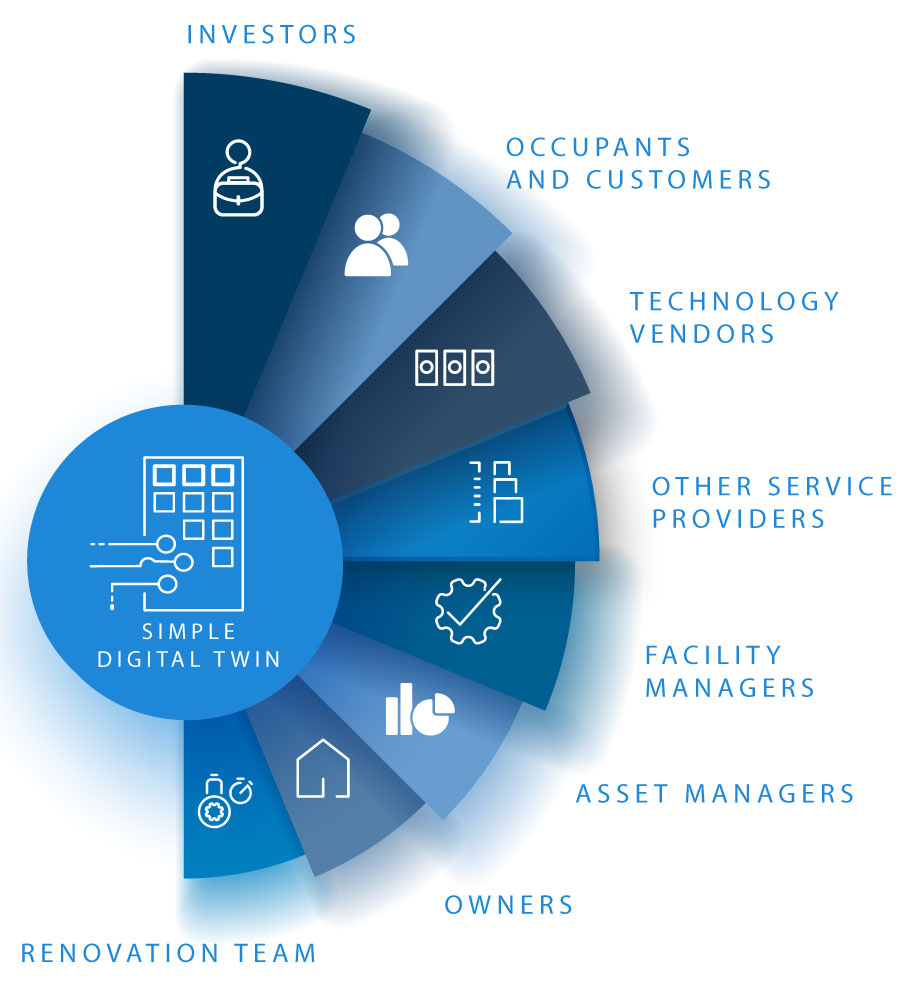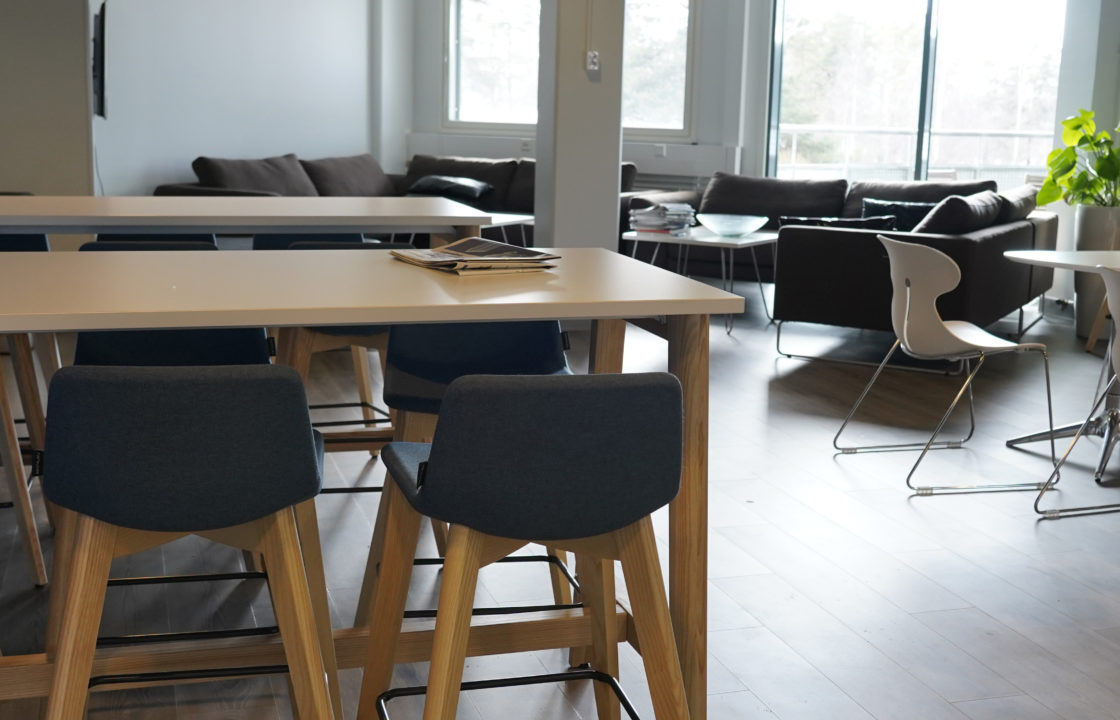Digital Twins are currently positioned in the Trough of Disillusionment in Gartner’s hype cycle. The existing dialogue of digital twins for buildings has centered around Building Information Models (BIM). These models are usually created and used during the design and construction phase of the building. BIMs are considered the perfect digital twins that contain heaps of information and detail with complex 3D visualization. While BIMs sound amazing, it’s safe to say that we’re quite far in the roadmap of delivering these perfect digital twins for the end-user of buildings. But should we wait for the perfect digital twin, or are there simpler digital twin solutions out there that can offer real business value right now?
I’m tired of waiting for the perfect digital twin so, in this article, I will shortly examine what digital twins are, what kind of digital twin models are out there and finally, examine a real-life use case of a digital twin for a safe return to the office.
What is a digital twin?
There are many definitions of a digital twin out there. On a higher level, a digital twin is a digital replica of a physical entity or a system. In the world of buildings, a digital twin is a replica of a space or building, containing several kinds of information that is gathered from IoT devices, the building’s automation system, and/or the users of the building.
Digital twins are used to make building management easier, hold all information in one place and create better user experiences by tracking changes, monitoring conditions, and predicting future needs.
Different kinds of digital twins
In the report Building Digital Twins that I wrote last year it was discovered that there are four different kinds of digital twins in terms of complexity:
1. The As-built digital twin
This kind of digital twin comprises all the models from the entire life cycle of the building. It’s in 3D and is a very close to an exact replica of the building itself. The As-built digital twin is often considered the perfect digital twin and they’re based on BIMs.
2. The Building Services digital twin
This type of digital twin is a little stripped-down version of the As-built model with only the information that is needed for the future optimization of the building’s technical systems. The Building Services type of digital twin is also visualized in 3D
3. Interactive floor plan digital twin
This type of digital twin is already much simpler than the previous two. It’s usually a 2D model or a very simple 3D model of the building’s drawings. The Interactive Floorplan is enriched by dynamic and static information gathered from, for example, IoT devices. Like in the Haltian Empathic Building, a range of services can be added on top of this model.
4. Business intelligence dashboards
The dashboard type of digital twin is, like the name suggest, a dashboard that has a 2D floorplan of the building embedded with data. The dashboards show different kinds of building data and the idea is that the information becomes more intuitive when it’s linked to a corresponding map.

It’s widely considered that the perfect digital twins, with all the abundance of data and information, are not yet ready for the use of the end-user. It can be said that a lot of the information available in a complex BIM is irrelevant: an office worker doesn’t need to see building design phases when looking for a free desk, for example. In other words, making a very detailed and fancy looking 3D digital twin may look nice, but does not offer the intuitive user experience or the value the real estate business most needs right now.
It is my belief that the simpler digital twins that are already on the market, can offer a great deal of value to all stakeholders in the field of smart buildings.
Read more: Workplace technologies
Simpler digital twins focus on use cases
When gathering information from different stakeholders, it has become clear that rather than creating a complex and fancy digital twin that is based on the BIM, the market has a true need for simpler models that can be used now. These models should then be something to which complexity can be then added over time.
Therefore, we see the lighter versions of digital twins to be very impactful and cost effective. The simpler models often allow a more use-case based design, meaning that they have been created to solve a certain problem in the everyday life of the end-user. The most common use cases can be seen from the image below.
The sweet spot for digital twin use cases

The most typical use cases for the simpler digital twin are for end users and managers. End users want to see the free desks and rooms, to see where their colleagues are and to book spaces with one click. Managers want utilization information, people flow, demand-based cleaning, environmental monitoring, and information sharing.
These use cases are something that can be solved now, not in the distant future. We already have the technology needed to offer companies great digital twins that hold all the relevant information and are flexible enough to be tailored to their needs. Rather than waiting for the perfect digital twin, we can now define the needed use cases, whether they be more on the facility management side or end-user experience side, and then build a digital twin with the supporting data.
Right now, the Haltian Empathic Building digital twin fits somewhere in between the two latter digital twin models: The Interactive Floorplan and the Business Intelligence Dashboards. It is an intuitive digital twin with a simple 2D/3D visualization that can be used on info screens, desktops and mobile devices. The data is collected from IoT devices and the users, and there’s access to all kinds of analytics dashboards for optimized space usage. Finally, the Empathic Building can be integrated with different systems to further enrich the data.
Case example: Halton’s return to office solution using Empathic Building digital twin
Halton is a global ventilation system company, focusing on workplace solutions. Being a company very familiar with buildings and building infrastructure, Halton too, have noticed that the BIMs are not quite ready yet. Therefore Halton has begun to integrate their ventilation solution to office solutions to make them something an end user can understand and interact with, rather than a technical solution of the building’s structure.
At their Helsinki office, Halton uses Empathic Building digital twin that has been integrated with their ventilation solution. Halton’s particular use case for the digital twin has been an easy return to the office and safe office environment during the COVID-19 pandemic. “Especially during these times, Empathic Building brings extra transparency. We show what the conditions are like in the digital twin. When our people come to the office, they can immediately see the CO2 figures, which is a good indicator of the indoor air quality,” says Anu Saxén, Director of Buildings at Halton.
Another great feature of Empathic Building is the possibility to see when different spaces have been used. To reduce exposure to airborne transmission of COVID-19, Halton leaves their meeting rooms empty for at least 15 minutes to give the demand-based ventilation time to clear to air in the room.
From the integration perspective, using Halton ventilation system from Empathic Building offers great user value since everything can be done form one place. People at the Halton office can define their preferred temperature in Empathic Building and Halton’s HVAC system automatically adjusts it to the desired setting.
What’s next, and when will the perfect digital twin be available?
In a BIM dominant digital twins world, decisions are made during the design and construction of the building. It is then decided what the tools and visualization are for the life cycle of the building. In other words, they are not necessarily built to match the end users’ needs.
So, what is the timeline in which we should really expect the perfect, more complex digital twin that serves all stakeholders? According to the report from last year, the perfect digital twin is still some years away, at least 3-5. Right now, offices are starting to use the simpler digital twins, increasing the building’s transparency for the users, and this will likely drive the more complex digital twin solutions to become more user friendly.
On the other hand, we will most likely move naturally towards the more complex digital twins when complexity is added to the simpler models. Then, the perfect digital twin will be done based on the user’s conditions and needs.
In conclusion, we do not need to wait for the perfect digital twin, to start getting all the value digital twins have to offer.

Can you reduce office space?
Validate with our 15 question questionnaire!
